Occupational Dermatoses
NOTE: This page is archived for historical purposes and is no longer being maintained or updated.
Slides 119 to 123
Slide 119 - Rhus Dermatitis
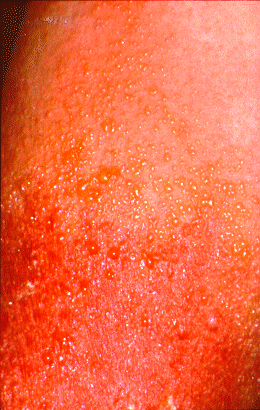
Recognition of basic morphologic patterns of skin eruptions is critical for accurate diagnosis of occupational skin disease. Acute allergic contact dermatitis is characterized by microvesicles. (Rhus Dermatitis)
Slide 120 - Positive Patch Test
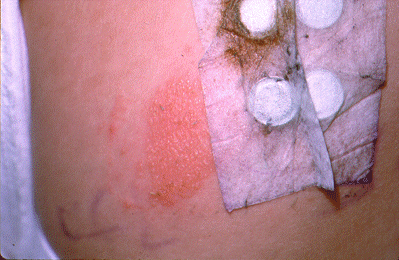
A positive patch test reaction demonstrates the characteristic microvesicular morphology of acute contact dermatitis. Once an allergen has been identified, the patient must be provided with a list of possible sources of exposure to the allergen and alternatives that are free of the allergen. Many allergens have a complex array of cross reactions. The patient must be warned about these as well.
Slide 121 - Chromate Dermatitis
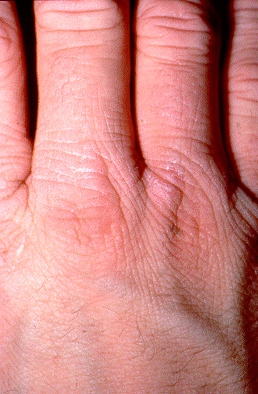
Chronic occupational contact dermatitis to chromates may remain microvesicular, or may evolve into a chronic lichenified dermatitis with accentuation of skin markings. This is true of many cases of chronic occupational contact dermatitis -- microvesicles are still present histologically, but not apparent clinically.
Slide 122 - Phototoxic Reaction to Lime Juice
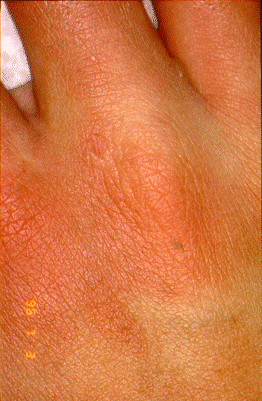
Phototoxic reactions appear as macular erythema. Phototoxic reactions to lime juice represent a common occupational hazard among bartenders.
Slide 123 - Ethylene Oxide Dermatitis
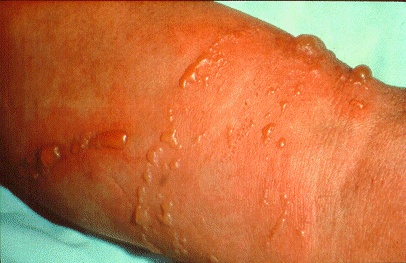
Irritant contact dermatitis (non-allergic) is characterized by erythema and unilocular bullae, resulting from epithelial necrosis. (Ethylene Oxide Dermatitis)
- Page last reviewed: January 5, 1998 (archived document)
- Content source:
- National Institute for Occupational Safety and Health Health Effects Laboratory Division (HELD)


 ShareCompartir
ShareCompartir